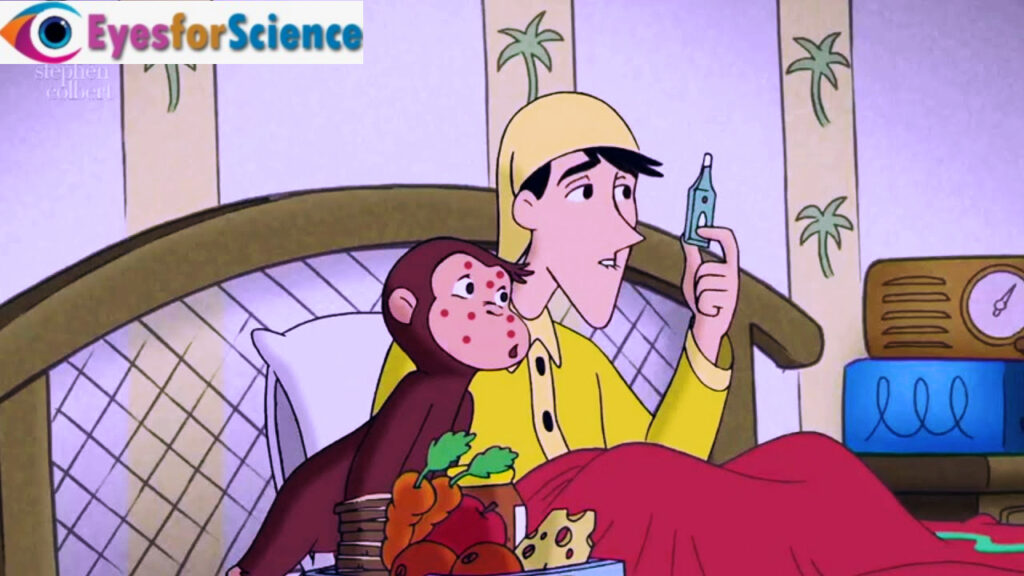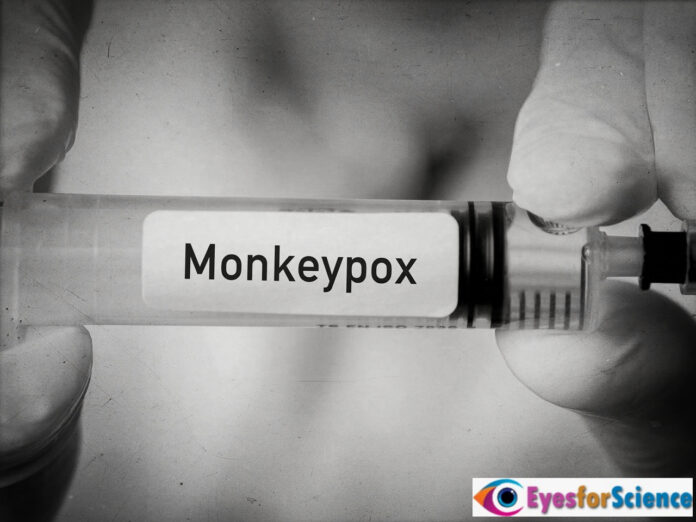What is Monkeypox Virus?
Monkeypox is a viral zoonosis (a virus which transmits to humans from animals) with similar symptoms to smallpox patients, but less severe clinically. It has emerged as a significant orthopox virus for public health since the eradication of smallpox in 1980 and the subsequent cessation of smallpox vaccination. It is also becoming more common in urban areas. Hosts are a wide range of rodents and non-human primates. Let us have a look at what is monkeypox disease?
The Pathogen
Monkeypox virus is a double-stranded DNA virus of the Poxviridae family’s Orthopoxvirus genus. The virus has two distinct biological clades: the central African (Congo Basin) clade and the West African clade. As per the reports, the Congo Basin clade can cause more severe diseases and is more transmissible. So far, Cameroon is the only country with both virus clades.

Which is the Natural Host of Monkeypox Virus Disease?
Several animal species are susceptible to monkeypox virus. Some of them are, rope squirrels, tree squirrels, Gambian pouched rats, dormice, non-human primates. The natural history of this virus is still unclear, and more research is process to determine the exact reservoir(s) and how virus circulation occurs in nature.
What Are the Symptoms of Monkeypox Virus Disease?
The monkeypox virus typically causes illness 1 to 2 weeks after exposure, but it can take up to 3 weeks.
- Fever
- Headache
- Tiredness
- Aching muscles
- Sore Throat
- Chills
- Dry Cough
- Backache
- Swollen Lymph Nodes
- Breathing Issues
A rash appears one to 3 days after your fever begins. It usually begins on your face before spreading to the rest of your body. The rash appears more frequently on the hands, feet, arms, and legs. It also follows a consistent pattern: Lesions that are flat and round develop into slightly raised bumps, which then develop into bumps filled with clear fluid. These then transform into bumps filled with yellowish fluid, which crust over and fall off.
You can infect others with monkeypox beginning a day before the rash appears. You can be contagious for up to 21 days after your first symptoms or until your lesions scab over and you have no other illnesses.
Outbreaks of Monkeypox Virus
Human monkeypox was first discovered in a 9-month-old boy in the Democratic Republic of the Congo in 1970, in a region where smallpox had been eradicated in 1968. Since then, the majority of cases were reported from the Congo Basin’s rural, rainforest regions, especially in the Democratic Republic of the Congo, and human cases have been reported from across central and West Africa.
Human cases of monkeypox have been reported in 11 African countries since 1970: Benin, Cameroon, Central African Republic, Democratic Republic of Congo, Gabon, Cote d’Ivoire, Liberia, Nigeria, Republic of Congo, Sierra Leone, and South Sudan. The true impact of monkeypox is unknown. The discovery of the concurrent chickenpox and monkeypox outbreak could explain actual or apparent changes in the mode of transmission in this case. Nigeria has been experiencing a huge epidemic since 2017, including over 500 suspected cases and over 200 confirmed cases, and a case fatality ratio of about 3%. Newer cases are still coming.
Must read Natural Ways to Fight Depression.
How Transmission of Virus Occurs?
While monkeypox is less contagious than smallpox, it can also spread from person to person through close contact. People with monkeypox virus may infect people via:
- Breathing in respiratory droplets
- Respiratory droplets inhaled
- Contact with body fluids such as blood or embryos
- Skin contact with monkeypox tumors (including inside their nose and mouth)
- Things that have come into contact with infected body fluids, such as bedding or clothing.
Infected animals can transmit the virus to humans if they bite or scrape you. Eating raw, contaminated meat can also transmit monkeypox virus. The virus can enter your body through a skin break or your mouth, nose, or eyes. You can breathe it in, but you’d have to be infrequent proximity for a long time. This is because most droplets do not travel very far.
Monkeypox isn’t an infection which transmits through sexual intercourse, because it can spread through other means. However, sexual intercourse may transmit the virus. According to WHO officials, sexual transmission is the common cause in majority of the May 2022 cases, particularly among men who have sex with men.
How Diagnosis of Monkeypox Virus Disease is Done?
Your doctor will examine your abnormalities and ask you detailed questions about your symptoms. They will attempt to rule out similar conditions such as:
- Allergies
- Syphilis
- Measles
- Chickenpox
- Scabies
- Bacterial skin infections
A laboratory test can determine whether or not you have a monkeypox virus disease.
What is the Treatment?
In the absence of specific therapy, many people infected with the monkeypox virus have a mild, self-limiting disease course. However, the prognosis for the virus is dependent on several factors, including previous vaccination status, initial health status, concurrent illnesses, and co-morbidities. Following consultation with the CDC, the following individuals may be considered for treatment:
- People suffering from serious illness (e.g., hemorrhagic disease, sepsis, confluent lesions, encephalitis, or other conditions requiring hospitalization)
- Humans at elevated risk of severe disease:
- People with immunocompromised (e.g., human immunodeficiency virus/acquired immune deficiency syndrome infection, leukemia, lymphoma, generalized malignancy, solid organ transplantation, therapy with alkylation agents, anti metabolites, radiation, tumor necrosis factor inhibitors, high-dose corticosteroids, being a recipient with hematopoietic stem cell transplant 24 months post-transplant or 24 months but with Graf-versus-host disease
- Pediatric patients, particularly those under the age of eight years
- Women who are pregnant, or breastfeeding
- People who have one or more complications (for example, secondary bacterial skin infection, gastroenteritis to severe nausea/vomiting, diarrhea, dehydration, bronchopneumonia, concurrent disease, or other co-morbidities).
- People with monkeypox virus anomalous infections, such as accidental implantation in the eyes, mouth, or other anatomical areas where monkeypox virus infection may pose a special risk (e.g., the genitals or anus)
Is there any Vaccination for Monkeypox Virus Disease?
Several observational studies have revealed that smallpox vaccination is about 85% effective in preventing monkeypox. As a result, those with smallpox vaccine may result in a milder illness. A scar on the upper arm is usually evidence of prior smallpox vaccination. The original (first-generation) smallpox vaccines are currently unavailable to the general public. Some laboratory or healthcare workers may have received a more recent smallpox vaccine to protect them from orthopox viruses in the workplace. For the prevention, a newer vaccine based on a modified attenuated vaccine virus (Ankara strain) approved in 2019. This is a two-dose vaccine with limited availability. Due to the cross-protection by the immune response to orthopox viruses, smallpox and monkeypox, formulations of the vaccine is based on the vaccinia virus.
Therapeutics of Monkeypox Virus
To alleviate symptoms, manage complications, and prevent long-term sequelae, full optimization of clinical care for infected patients should be there. Fluids and food should be provided to patients to ensure adequate nutritional status. The European Medicines Agency (EMA) licensed tecovirimat, an antiviral agent developed for smallpox, for monkeypox in 2022 based on data from animal and human studies. It is not widely available yet. If tecovirimat is used for patient care, proper monitoring in a clinical research setting with prospective data collection should be there.
Prevention of Monkeypox Virus Disease
To avoid contracting monkeypox:
- Avoid contact with animals may have the virus, particularly dead animals in areas where monkeypox is common
- Do not use bedding and other materials that have been in contact with a sick animal
- Keep infected people and animals separate from others
- Wash your hands frequently with soap and water if you came near to the infected person
- Wear protective equipment such as masks, safety goggles or glasses, and gloves








